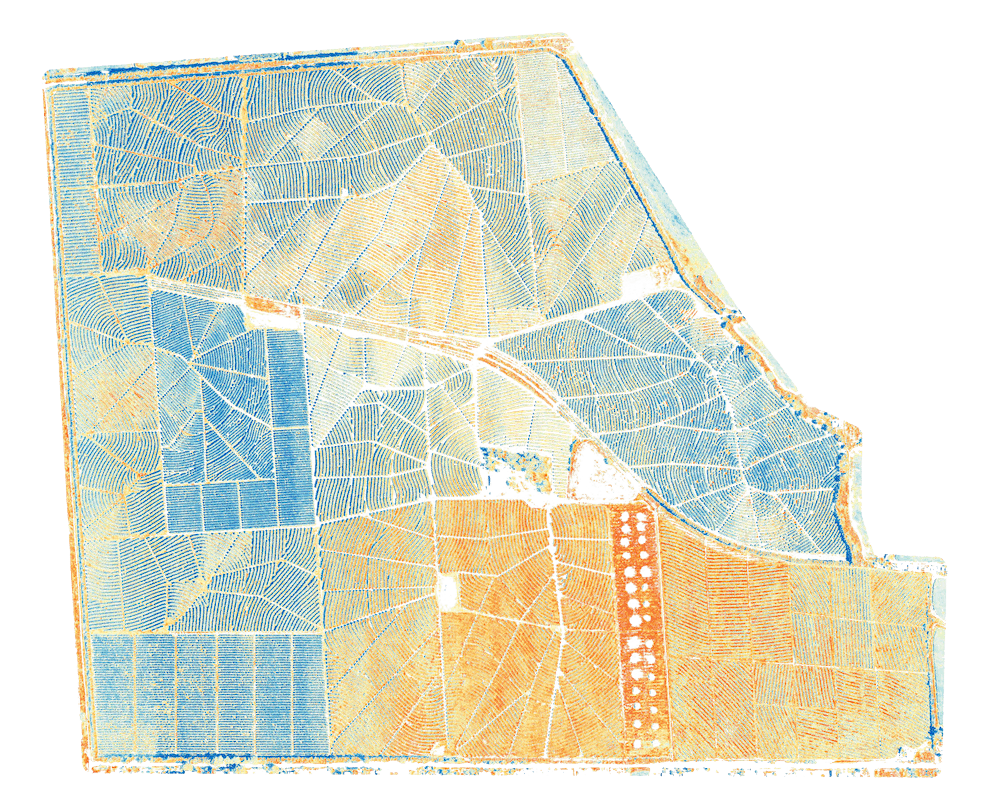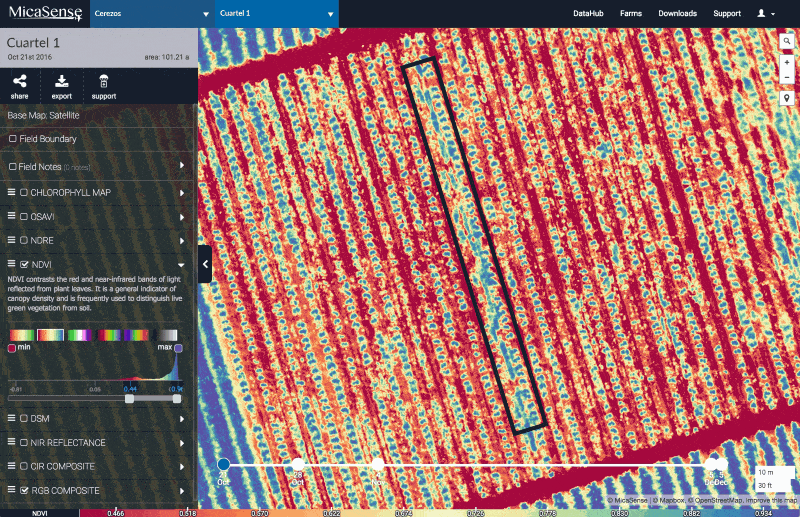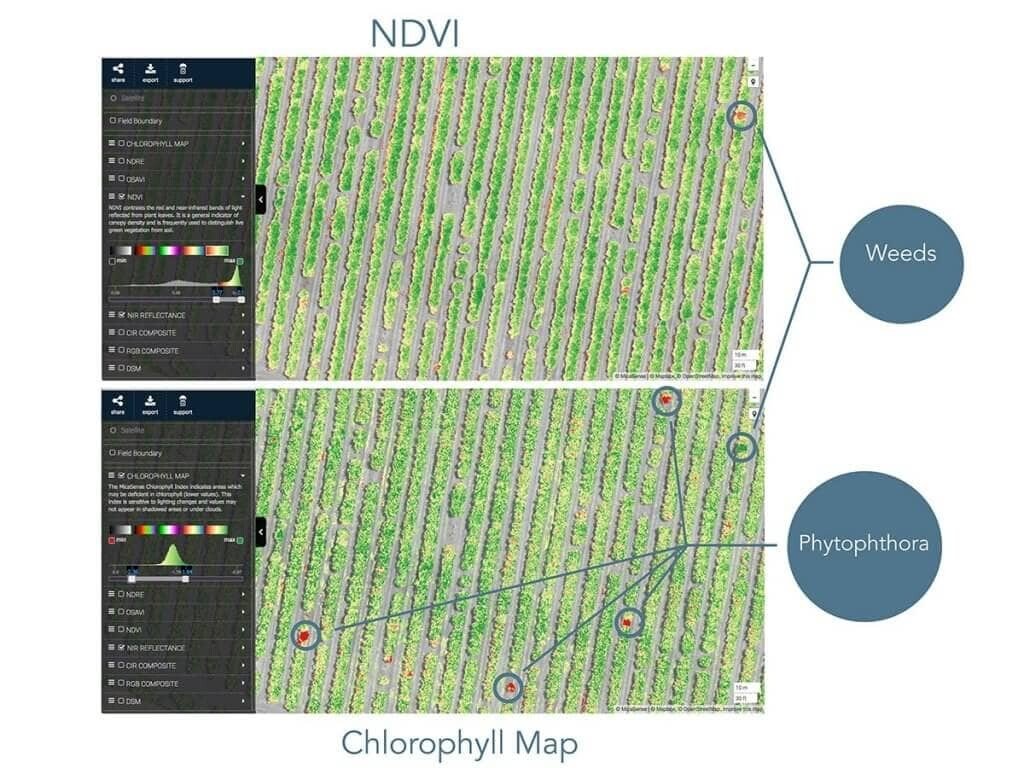Why Multispectral Mapping beats NDVI

Getting the Right Management Insights at the Right Time
Why is multispectral mapping so important? Because decision-making is not about pretty pictures, it’s about having the right data for the right job and empowering you to grow the healthiest crops you can.
NDVI was good technology 30 years ago when the first Landsat satellites were launched, but there are so many more practical analysis options for Rededge Multispectral mapping data. It has even been shown that in some situations, using NDVI alone can result in false indications.
Light conditions also affect how NDVI mapping is interpreted, which can also result in false conclusions. Traditional aerial NDVI mapping (and most satellite mapping) cannot calibrate the results for changes in light conditions during and between mapping visits – e.g. cloud conditions, time of day, time of year, etc. Our Micasense Rededge multispectral sensor uses the latest DLS2 ambient light sensor technology to accurately calibrate each and every map, even over long periods of time, to ensure the data is not skewed by light conditions (e.g. cloud cover, seasonal solar variance, etc) and can be compared reliably.

In the example above, a cherry orchard was monitored for several weeks after application of a herbicide to treat an invasive weed species. The NDVI analysis appeared to show that the weeds were still active, even a week after the herbicide had been applied. This implied that further investigation and treatment would be needed.

Because the crop was mapped using a RedEdge multispectral sensor (which detects at NIR and four other bands), analysis of the same area using the NDRE index (data from the RedEdge NIR band) clearly shows that in fact the herbicide was working just one week after it was applied – the soil index values are dropping to red which indicates no leaf growth in the area where the glycophosphate had been applied.
This analysis alone saved the producer the time and cost of having to send an agronomist to scout the field and see if the herbicide had actually done its job, the cost and effort of applying a further herbicide treatment because the NDVI data appeared to show it had not worked, and reduced the risk of the weed developing herbicide resistance due to multiple applications.
Why? Because the RedEdge data captured by this sensor was able to detect when the weeds began to go yellow, rather than having to wait, as the NIR sensor did, until they were completely dead.
If you’re currently relying on NDVI mapping to make decisions about your crop health, you may be missing out on vital decision-making information entirely.

In the above image, traditional NDVI analysis detected only one small issue in this citrus orchard – a minor weed emergence. Detailed cholorophyll mapping using multispectral data was able to identify four trees which had lower than average chlorophyll production and needed investigation. The grower walked the orchard and looked at the trees identified by this map (which he could easily do using his tablet computer and the GPS-enabled output maps) and was able to confirm that they were showing signs of phytophthora, a fungal water mould that, left untreated, could have destroyed the entire orchard. Removal of the affected trees saved the rest of the orchard.
Why? Because NDVI mapping relies entirely on differences in reflectance of sunlight which occur when the plant is affected by disease or pest damage. Chlorophyll mapping, which is part of our RedEdge Multispectral analysis suite, can detect quite small changes in the production of chlorophyll, the plant’s response to absorption of sunlight, well before the damage becomes apparent.
There are many reasons why Multispectral vegetation mapping results far exceed those from traditional NDVI mapping, including being able to:
- more accurately assess the results and the health of new plantings
- accurately count trees and plants during the growing season
- accurately identify the emergence of pests and diseases in crops and plantations
- more accurately predict both the timing and outcomes of harvesting decisions
Although the investment in both equipment and skills required to reliably use Multispectral Mapping are much greater than those for NDVI, Queensland Drones has designed its Multispectral Mapping service to be timely and affordable to use throughout the growing season.
Contact us now on 1300 025 111 to discuss your multispectral mapping needs, or request a quote
Find out more about our RedEdge Multispectral Mapping Service for Crops and Vegetation.
Enquire about RedEdge Multispectral Mapping on your property.
Leave a Reply
You must be logged in to post a comment.

One Comment